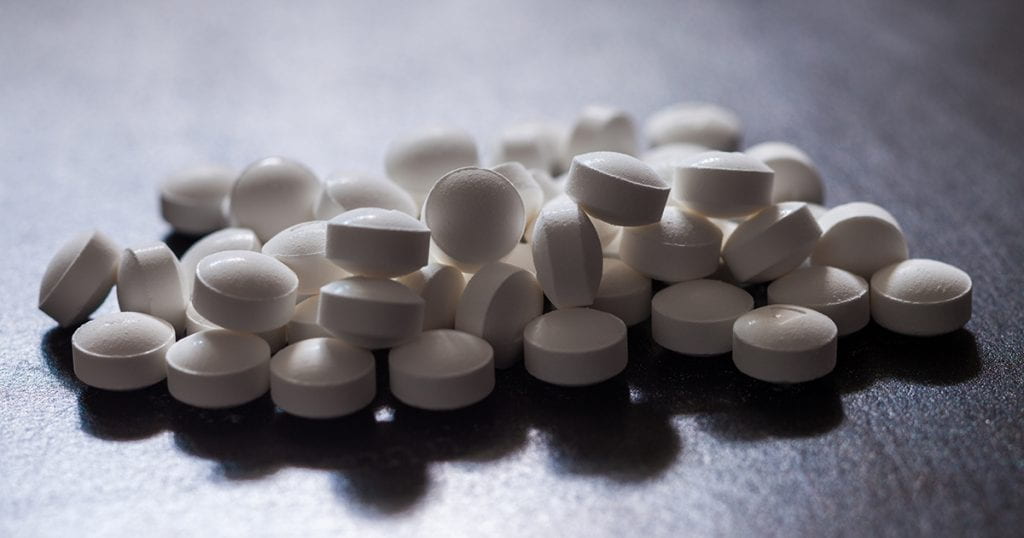
BLOOMINGTON, Ind. — Over the past 15 years, the number of opioid overdose deaths in Indiana has risen by more than 500 percent, while misuse of these drugs has cost the state a total of $43.3 billion, according to research from Indiana University.
In addition to the human cost, economic damage from the misuse of opioids in Indiana cost $4.3 billion last year and will exceed $4 billion again this year — or about $11 million each day.
Direct costs are expected to top more than $1 billion in Indiana in 2018. Gross state product losses from the accrual of deaths in Indiana will likely exceed $1.25 billion, and another $1.75 billion will be lost due to underemployment attributed to misusers.
Ryan Brewer, associate professor of finance at Indiana University-Purdue University Columbus, and Kayla Freeman, a doctoral candidate in finance at the IU Kelley School of Business, studied the opioid epidemic’s impact on state and local economies, the labor market and health care providers in a special issue of the Indiana Business Review, published by the IU Kelley School of Business’ Indiana Business Research Center.
Their research includes recommendations for future actions by state officials. Most of the findings in this release come from their article, “Cumulative economic damages from 15 years of opioid misuse throughout Indiana.”
More than 12,300 state residents are estimated to have died from 2003 to 2017 due to opioid overdoses — nearly the same number of people who live in Pike County in southern Indiana.
Opioid addiction can hinder or prevent misusers from finding employment or being part of the labor market, which then leads to reduced gross state product. Lost gross state product has gone from zero in 2003 to $1.72 billion in 2016 — nearly double the $926 million loss from the year before.
Potential lost wages due to opioid misuse totaled $752 million in 2016.
“While it is true the entire nation has been mired in the crisis, only a handful of states — including Indiana — have been struggling with the epidemic while also facing an increasingly tight labor market, which challenges our hopes of realizing strong post-recessionary growth in an economy where labor is increasingly difficult to find,” Brewer said.
Brewer and Freeman examined opioid-related costs to families, hospitals and government agencies across Indiana. Among their findings:
- Non-lethal opioid overdoses cost over $224 million in hospitalization costs in 2016 alone, with an additional $297 million in other opioid-related hospital stays.
- More than $40 million is spent annually for rehabilitation costs.
- The cost of drug arrests and court costs exceeds $13 million annually, and costs of incarceration have reached more than $70 million each year.
- The previous health care costs do not include the state’s 578 youngest victims: infants born with neonatal abstinence syndrome, who experience withdrawal symptoms after losing access to their mother’s drugs after birth. The researchers estimate that total marginal costs for neonatal abstinence syndrome births totaled more than $36 million in 2016.
- As of 2016, an estimated 5,243 Hoosier children were in foster care due to parental opioid misuse (a more than 600 percent higher increase from 2003).
- Total funeral costs for victims of opioid overdose deaths rose from $1.2 million in 2003 to $7.1 million in 2016.
“Indications from national and local sources suggest communities across the country and within Indiana continue to experience worsening conditions and increasing numbers of misuse cases,” Brewer and Freeman write.
This research contributes to IU’s efforts to address the addictions crisis. IU’s Grand Challenge initiative Responding to the Addictions Crisis brings together its world-class faculty, as well as its business, nonprofit and government partners to create a comprehensive plan to reduce deaths from addiction, ease the burden of addiction on Hoosier communities, and improve health and economic outcomes. This collaborative, statewide initiative is the nation’s largest and most comprehensive university-led response to the opioid addiction crisis.
